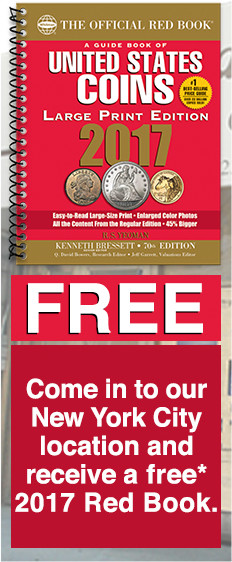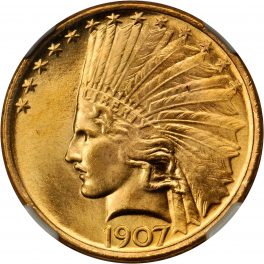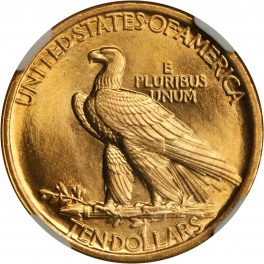Value of 1907 No Periods Indian Head $10 Gold
$176,250
History, Information, and Value of 1907 No Periods Indian Gold Eagle
Value of 1907 No Periods Indian Head $10 Gold
Most 1907 No Periods Indian Gold Eagles are softly defined in the center of Liberty’s portrait on the obverse as well as over the high points of the reverse eagle. Luster is very good to excellent for typical Mint State coins with the finish usually soft and satiny. Most examples are moderately to heavily abraded, as there is a sizeable population through Gem Mint State, overall smooth-looking eagles of this issue can be located with relative ease.
The 1907 No Periods Philadelphia Mint coin is one of the more common Indian eagles. As this was the first issue of the type to reach general circulation, many examples were saved by contemporary collectors and others for their novelty. Circulated coins are plentiful, as are Mint State pieces in the MS-60 to MS-64 grade range. Gems in MS-65 and MS-66 are scarce in an absolute sense, yet also common within the context of the Indian eagle series. Few examples have been certified in MS-67 and it is nearly unobtainable any finer, although PCGS and NGC have certified a few outstanding survivors in MS-67+ and MS-68. One of the PCGS MS-68s appeared in the Stack’s Bowers Galleries Chicago ANA Auction of August 2013. Although the Mint did not produce a regular issue Proof of the 1907 No Periods, two Sandblast Proofs are known, one of which is likely the Gaston DiBello specimen auctioned by Stack’s in May 1970.
The text on the Indian Gold Eagle reads as follows. Obverse: LIBERTY; Date. | Reverse: UNITED STATES OF AMERICA; E PLURIBUS UNUM; TEN DOLLARS.
If your coin’s text does not match the text shown above, then there is a chance your coin is either a counterfeit, or has been worn to the point that some words or now unlegible. Let the experts at Coinappraiser.com take a look at your rare gold coin to determine if it is authentic. If the coin was purchased from a coin dealer or in a certified grading holder, then the chances are that your coin is authentic. If your coin was purchased from a online non-dealer source or at a flea market, then you may have reason to be skeptical. Our experts will always be able to tell you if your coin is authentic and answer the age old question: “How much is my gold coin worth?”





















